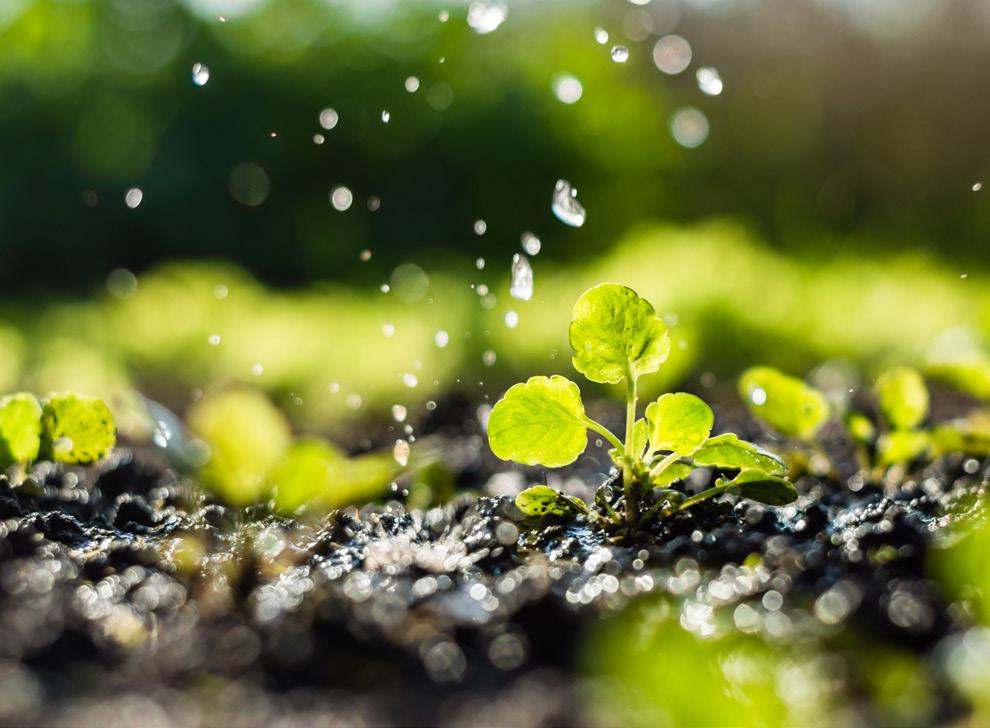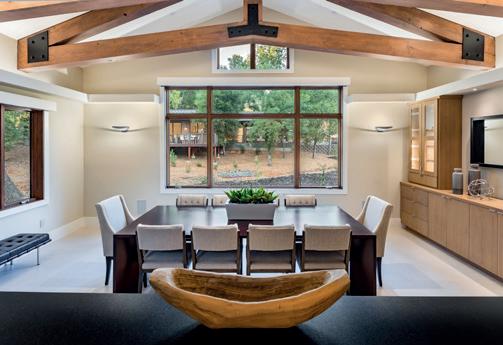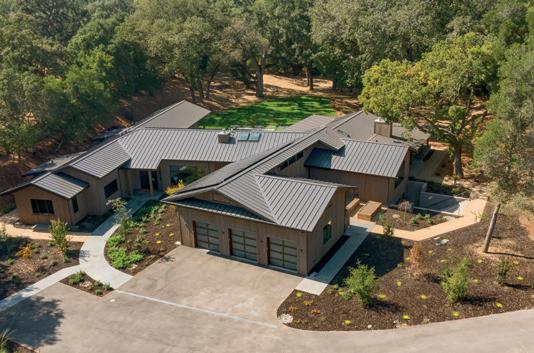
5 minute read
Water Efficient Landscaping
By Jenny Yin, DeLeon Realty Interior Designer
Many homeowners would love to have their houses encircled by lush lawn, towering trees, and colorful flowers. With so many people working from home recently, having a nice garden has become even more desirable, since it could serve as an extension of a home office. Plus, it adds more value to your property. • Santa Barbara Ceanothus - Prefers sun to partial sun exposure, requires infrequent to no summer watering • Scarlet Bugler - Prefers hot and dry summer, is drought tolerant • Deergrass - Stays evergreen even without watering
In order to maintain the garden, typical houses would need to spend more than 50% of their water usage on landscaping. However, with Governor Newsom recently declaring a drought emergency in 41 counties1, Californians now need to use water more efficiently and wisely. This does not mean you have to give up your garden though; rather, there are several alternatives to reduce water on landscaping and still create and maintain a charming garden.
Landscape Using Low-Water Native Plants/Trees
Landscaping your garden with low-water native plants and trees has a great impact on water conservation. Native plants have already adapted to your local environment, and over time, will require less care. California native plants are a great option because they are water-efficient, come in a variety of colors, and provide biological diversity.
Here are some of the California plants that will help your low-water garden stay pretty:
• Golden Yarrow - Prefers sun exposure, has clusters of yellow flowers, is attractive to butterflies
Mulch is Important to the Garden
Another way of reducing water on landscaping is to retain moisture in the soil. Moisture is lost through evaporation, especially during hot and windy days. To prevent the garden soil from evaporation and direct exposure from sunlight, placing mulch on top of the soil is most effective.
Because mulch has the ability to maintain moisture in the soil, it will reduce the need of watering your plants. It also acts as an insulator that keeps the roots of the plants at a constant temperature and cooler in the summer. Another benefit of mulch is to provide nutrients and improve the quality of the soil as it breaks up the clay and allows water and air movement through the soil.
The recommended method is applying 2 to 4 inches of mulch on planting beds, especially the area around the trees. Replacing the grass with mulch will lower the competition for water and nutrients.
Besides the benefit of conserving soil moisture, aesthetically, mulch looks great and blends well naturally with the surrounding landscape. It mimics the elements that you will find in the natural environment, such as plant branches and soil.
Use Drip Irrigation to Reduce Water
Drip irrigation has enjoyed a recent rise in popularity. Not only does it help with water conservation but it also saves time and money. Drip irrigation uses almost 50% less water than an overhead irrigation system. It delivers water slowly to the plants at ground level rather than elevated level. That way, the water will be delivered directly to the roots of the plants. It prevents overwatering because it places the exact amount of water to a specific area that is needed. The water coming from the drip irrigation system comes out of emitter tubes that are attached to a long tube of water. Each emitter tube is programmed to target a dedicated area. Because of the precise location of the watering method, it also eliminates weeding, thus saving time on maintenance.

Consider Installing Artificial Turf
As the drought situation in California is getting more serious, the popularity of using artificial turf will increase very quickly. Replacing your lawns with artificial turf eliminates the need for watering and mowing while maintaining the vibrant grass color and great condition throughout the year. Fertilizer and pesticides are also not required for artificial turf. Therefore, you can save more time on maintaining the lawn. Please refer to the May 2021 issue of The DeLeon Insight, pages 26-27, for more information on the benefits of artificial turf.
Hardscapes can Add Textural Variety while Saving Water
An alternate method of replacing your lawns is to place large rocks and pebble stones around trees and native plants to beautify your garden. From a “look and feel” perspective, it adds tranquility to the garden and creates a nice contrast with the plants. Since hardscape does not require an irrigation system, it allows more flexibility to create interesting patterns and pathways. Given the unique texture and different shapes of the rocks and stones, they can be the focal points of the garden. Similar to artificial turf, hardscaping also has the benefit of eliminating water, fertilizer, and pesticides.
Reduce Water Bill
By applying some of these water-saving methods mentioned in this article, it will help reduce your water bill without sacrificing a beautiful garden. Even if we were not in a drought emergency, there are many advantages to water-efficient landscaping.
























